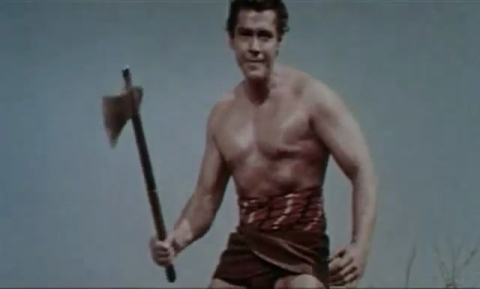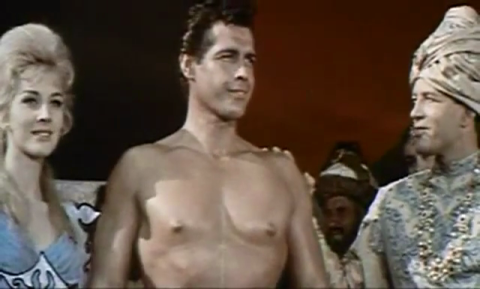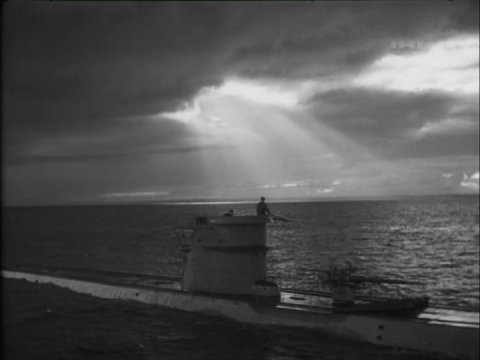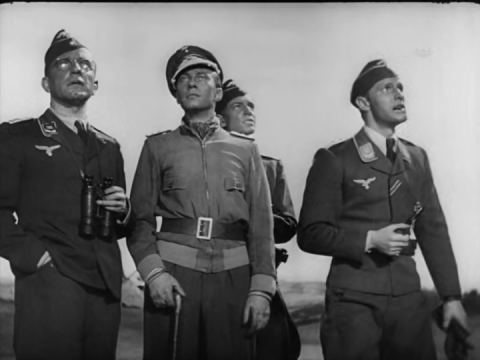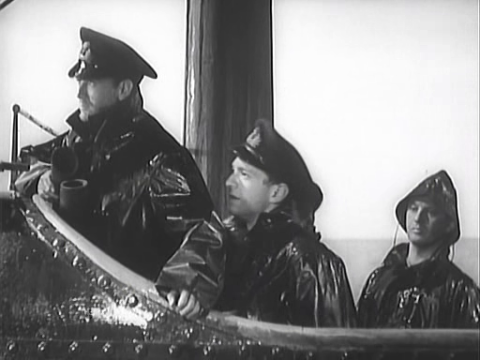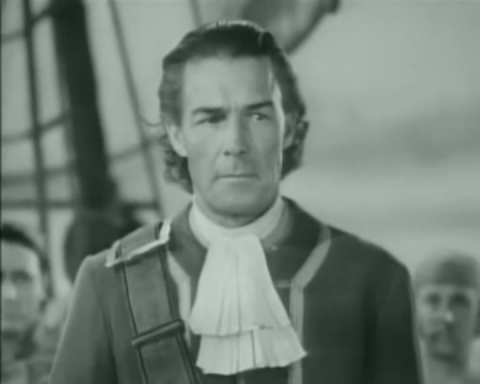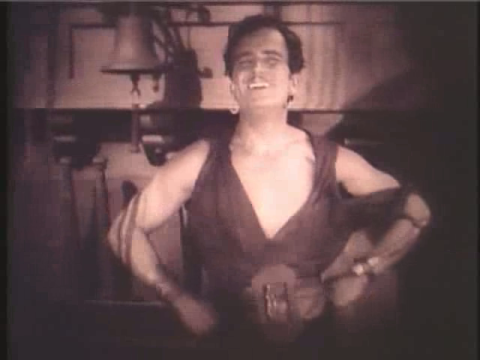There are quite a few old serials at the Internet Archive. The serial was a common cinematic genre from the 1910s through the 1950s. There were many different subgenres (western being, perhaps, the most common), but nearly all were focused on light entertainment with action and adventure a-plenty. Manhunt of Mystery Island (chapters 1, 2, 3, 4, 5, 6, 7, 8, 9, 10, 11, 12, 13, 14, 15) was no exception in this regard, although it was in some respects of higher quality than most.

The plot, in typical serial style, is basically simple, yet in some ways a bit silly. The scientist William Forrest has been captured by the evil Captain Mephisto, who wants to use Forrest’s invention for world domination. Captain Mephisto, a long-dead pirate, is in reality one of the heirs of Mystery Island, who by molecular transformation can change between his two roles. Fortunately, Forrest manages to get word to the mainland. His daughter, Claire, along with the crime-fighter Lance Reardon, travel to Mystey Island to find Forrest and thwart Mephisto. But Mephisto turns out to have both cunning and resources to set up his defences. And who is he really?
Modern Hollywood action aesthetics may owe a lot to the heritage from the serials, but in one respect at least, modern films are very different. The fight sequences are governed by a completely different set of standards. Today, we often see a lot of close-ups, fast cuts and techniques inspired by tae-kwon-do or karate. The serials apparently took their inspiration from boxing, street brawling and jujitsu, and additionally used long, carefully choreographed shots. Well, at least the more lavish serials, such as this one, had well-made choreography. In some serials, the fights mostly look sloppy, but here they are fascinating and well worth watching, even though they may become a bit corny at times.
Another interesting aspect of this particular serial is the female sidekick, Claire Forrest (Linda Stirling). Far from the weak females of some earlier (e.g. Adventures of Captain Marvel) or later (e.g. Radar Men from the Moon) serials, Miss Forrest is a strong and self reliant character, who can fly a plane and fire a revolver, and even wrestle or kick a bit when the need arises. In fact, she saves the day on a number of occasions. Sure she faints or gets kidnapped every once in a while, but our male hero tends to pass out about as often as she does. She reminds me of the female “Zorro” in Zorro’s Black Whip from a year earlier. This is hardly coincidental, seeing as it is the same actress and the same co-director (Spencer Gordon Bennet). But it may also be a sign of the times that strong female characters rose up briefly. Women had taken a stronger position in society due to the war, which required many men to go overseas with the armed forces. However, there are many contrary examples of weak female leads from about the same time, and in any event the trend did not last very long. As far as I know, you have to go back to the early 1930s to find similar strong female characters in serials, and the serial as an artistic form was long since dead when the female hero made a real comeback in Hollywood.
One of the few really annoying things about the serials from the 1940s and 1950s is that there is basically no plot development. The first episode (usually about ten or fifteen minutes longer than the others) sets the stage and intruduces the characters, but thereafter things mostly follow the same pattern. Either the hero or the villain will make a move toward achieving his ends. Then the opponent will find a way to thwart him. The ensuing fight or chase will end with the mandatory cliffhanger, and when we have found out in the next episode how the hero rescued himself, everything is back to normal. I have sometimes compared it with a chess game, but in reality it is more like a tennis match without points, and especially with a 15-parter the whole thing becomes more like a transportation toward the inevitable final showdown in the last episode.
This serial is best enjoyed as one of the best of Hollywood’s soundie serials. The tempo is high, the chases and fights are entertaining, even the actors are pretty decent. But if you happen to skip an episode or two, you do not risk to miss very much of essence.

Manhunt of Mystery Island
Download links: 1 | 2 | 3 | 4 | 5 | 6 | 7 | 8 | 9 | 10 | 11 | 12 | 13 | 14 | 15
Year: 1945
Running time: 3 h 39 min
Directors: Spencer Gordon Bennet, Yakima Canutt, Wallace Grissell
Stars: Richard Bailey, Linda Stirling
Image quality: Good
Resolution: Low (384×288)
Sound quality: Good




